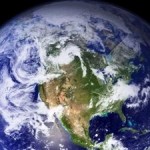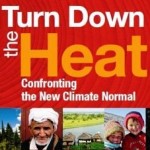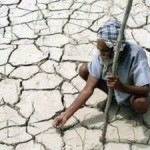- Ocean Acidification
Coral reefs are acutely sensitive to changes in water temperature and acidity levels. The report warns that by the time the warming levels reach 1.4°C in 2030s, coral reefs may stop growing. This would be a result of oceans becoming more acidic as a result of higher CO2 concentrations. And with 2.4°C, coral reefs in several areas may actually start to dissolve. This is likely to have profound consequences for people who depend on them for food, income, tourism and shoreline protection.
- Heat Extremes
A 4°C warmer world would also suffer more extreme heat waves, and these events will not be evenly distributed across the world, according to the report.
Sub-tropical Mediterranean, northern Africa, the Middle East, and the contiguous United States are likely to see monthly summer temperatures rise by more than 6°C. Temperatures of the warmest July between 2080-2100 in the Mediterranean are expected to approach 35°C – about 9°C warmer than the warmest July estimated for the present day. The warmest July month in the Sahara and the Middle East will see temperatures as high as 45°C, or 6-7°C above the warmest July simulated for the present day.
- Lower Agricultural Yields
Hotter weather could in turn lower crop yields in a 4°C world – raising concerns about future food security. Field experiments have shown that crops are highly sensitive to temperatures above certain thresholds. One study cited in the report found that each “growing degree day” spent at a temperature of 30 degrees decreases yields by 1% under drought-free rain-fed conditions.
The report also says drought-affected areas would increase from 15.4% of global cropland today, to around 44% by 2100. The most severely affected regions in the next 30 to 90 years will likely be in southern Africa, the United States, southern Europe and Southeast Asia, says the report. In Africa, the report predicts 35% of cropland will become unsuitable for cultivation in a 5°C world.
- Risks to Human Support Systems
The report identifies severe risks related to adverse impacts on water availability, particularly in northern and eastern Africa, the Middle East, and South Asia. River basins like the Ganges and the Nile are particularly vulnerable. In Amazonia, forest fires could as much double by 2050. The world could lose several habitats and species with a 4°C warming.
- Non-linear Impacts
As global warming approaches and exceeds 2°C, there is a risk of triggering non-linear tipping elements. Examples include the disintegration of the West Antarctic ice sheet leading to more rapid sea-level rise, or large-scale Amazon dieback drastically affecting ecosystems, rivers, agriculture, energy production, and livelihoods. This would further add to 21st-century global warming and impact entire continents.
The report states that the science is unequivocal that humans are the cause of global warming, and major changes are already being observed. The global mean temperature has continued to increase and is now about 0.8°C above pre-industrial levels.
While a global warming of 0.8°C may not seem large, the report notes that many climate change impacts have already started to emerge, and the shift from 0.8°C to 2.0°C warming or beyond will pose much larger challenges. But a global mean temperature increase of 4°C approaches the known historic level of change for the planet, which harks back to the last ice age when much of central Europe and the northern United States were covered with kilometres of ice and global mean temperatures were about 4.5°C to 7°C lower. And this contemporary human-induced climate change, the report notes, is occurring over a century, not millennia.
Kyte said, “The Bank commissioned the Potsdam Institute for Climate Impact Research and Climate Analytics to make a summary analysis of the latest climate science, as a means to better understand the potential impact of a 4°C warmer world in developing countries.”
Today, the Bank is helping 130 countries take action on climate change. Last year, it doubled its financial lending that contributes to adaptation. The Bank-administered US $ 7.2 billion Climate Investment Funds are now operating in 48 countries, leveraging an additional US $ 43 billion in clean investment. Increasingly, the Bank is supporting action on the ground to finance the kind of projects that help the poor grow their way out of poverty, increase their resilience to climate change, and achieve emissions reductions.
Click here to read/download the Full Report.
Source: The World Bank.














